The world of work is in constant flux. In the past year, that flux has been exacerbated by the outbreak of COVID-19. Consequently, there has been a seismic shift in this sphere – for some, it has meant completely altering how they go about performing their work. Whilst unfortunately for the millions who now find themselves unemployed, it has resulted in a lack of it.
Even prior to the events of 2020, there has been a growing appreciation for the importance of learning and development in the workplace. According to Gartner, more than two-thirds (68%) of HR leaders in the United States feel that learning new skills would be the most pressing issue for the coming year, followed by organizational design and change management (46%), current and future leadership (44%), the future of work (32%) and employee experience (28%). Reskilling is one option that leaders and employers alike might consider as a means to change the skill sets of their teams.
What is Reskilling?
In a nutshell, reskilling means training a current employee in skills required for the tasks of tomorrow. By ensuring that employees are equipped with the necessary knowledge and understanding required of them in the coming years, an organization can minimize skill gaps moving into the future.
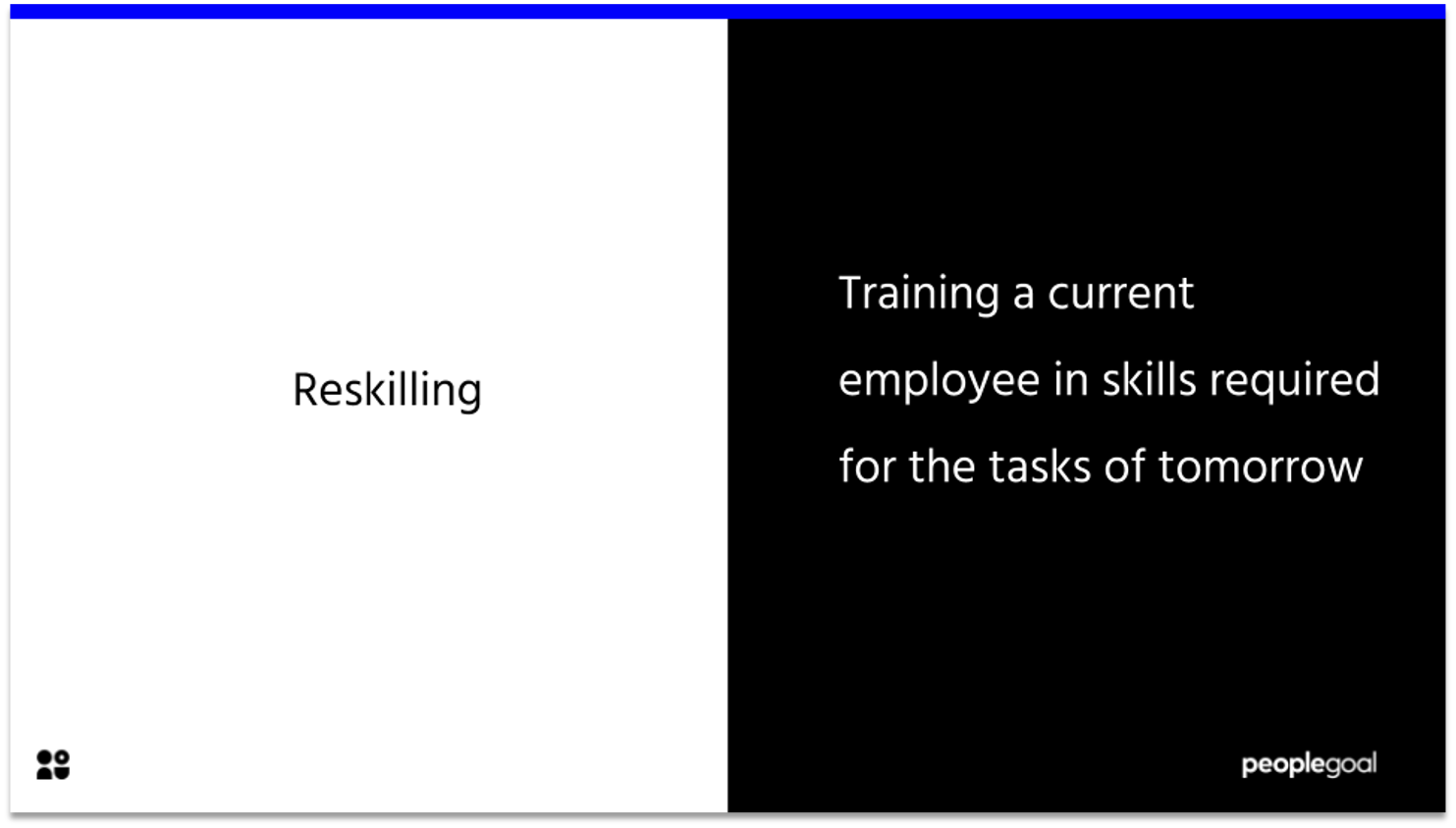
Shifting the understanding of leaders from having individuals in particular jobs to identifying individuals with specific skills, they can better plan and execute organizational objectives. By adopting a more agile approach that highlights particular learning prgrams for skills required today and in the future, strong teams can develop and support each other more effectively. The digital transformation is at the forefront of all business leaders’ minds, especially following the impact of the COVID-19 crisis.
Reskilling programs are learning in service of an outcome, whether in preparation for moving into a new job or becoming more capable to manage new responsibilities. Reskilling goes beyond learning job-specific technical skills and encourages the acquisition of core competencies including creativity, communication and adaptability. The ability to successfully promote business models that emphasize the importance of job training and learning experience beyond an individual’s immediate responsibilities are vital for long-term success.
Significance of Reskilling
There are many drivers that create the necessity for reskilling. From a pandemic to automation, jobs and the roles of employees are always evolving. To keep up with this dynamic environment, it is important for leaders to look ahead and construct a path to success. This success can be measured against the number of skill gaps that remain in an organization.
There is a pressing need to take a dynamic approach to reskilling and redeploying talent in which all stakeholders work together to shifting skill needs and finding new ways to develop skills at the time of need.
Gartner’s study highlighted that currently, only 21% of HR leaders say peers share accountability or partner with HR to determine future skill needs. It added that a dynamic approach to reskilling enables faster identification of skills needs, and employees apply 75% of the new skills they learn.
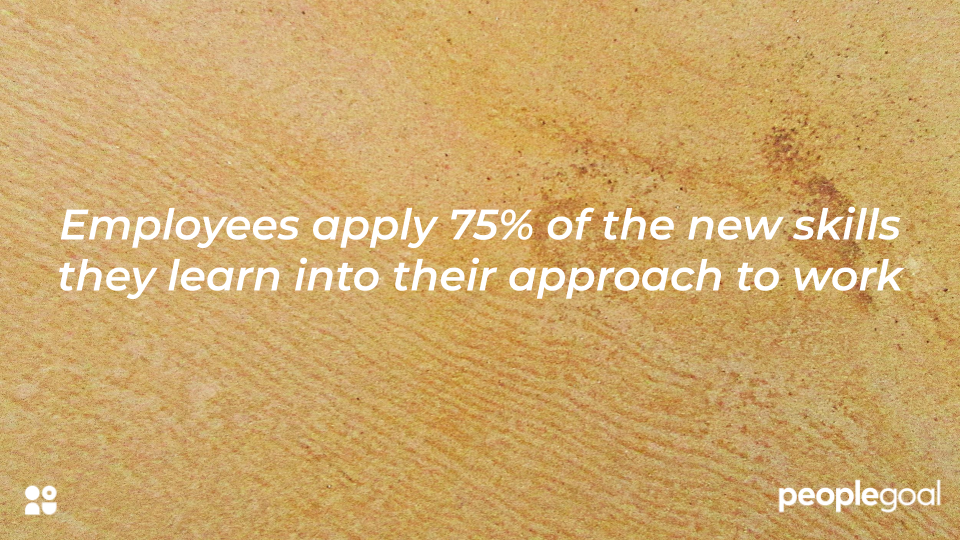
There are significant benefits to reskilling or upskilling your workforce. In fact, one study found that 91% of companies and 81% of employees stated that upskilling your workforce boosts productivity at work.
Investing in your employees has multiple positive effects. An increase in productivity can be attributed to team members having greater capabilities to take on tasks. It can also be increased through higher levels of engagement – employees that feel valued are more committed to performing well.
It goes without saying that a more productive workforce contributes to more innovative and creative solutions in realizing company objectives. Beyond the significance this has at a company-wide scale, there are 3 key outcomes that stand out for any organization:
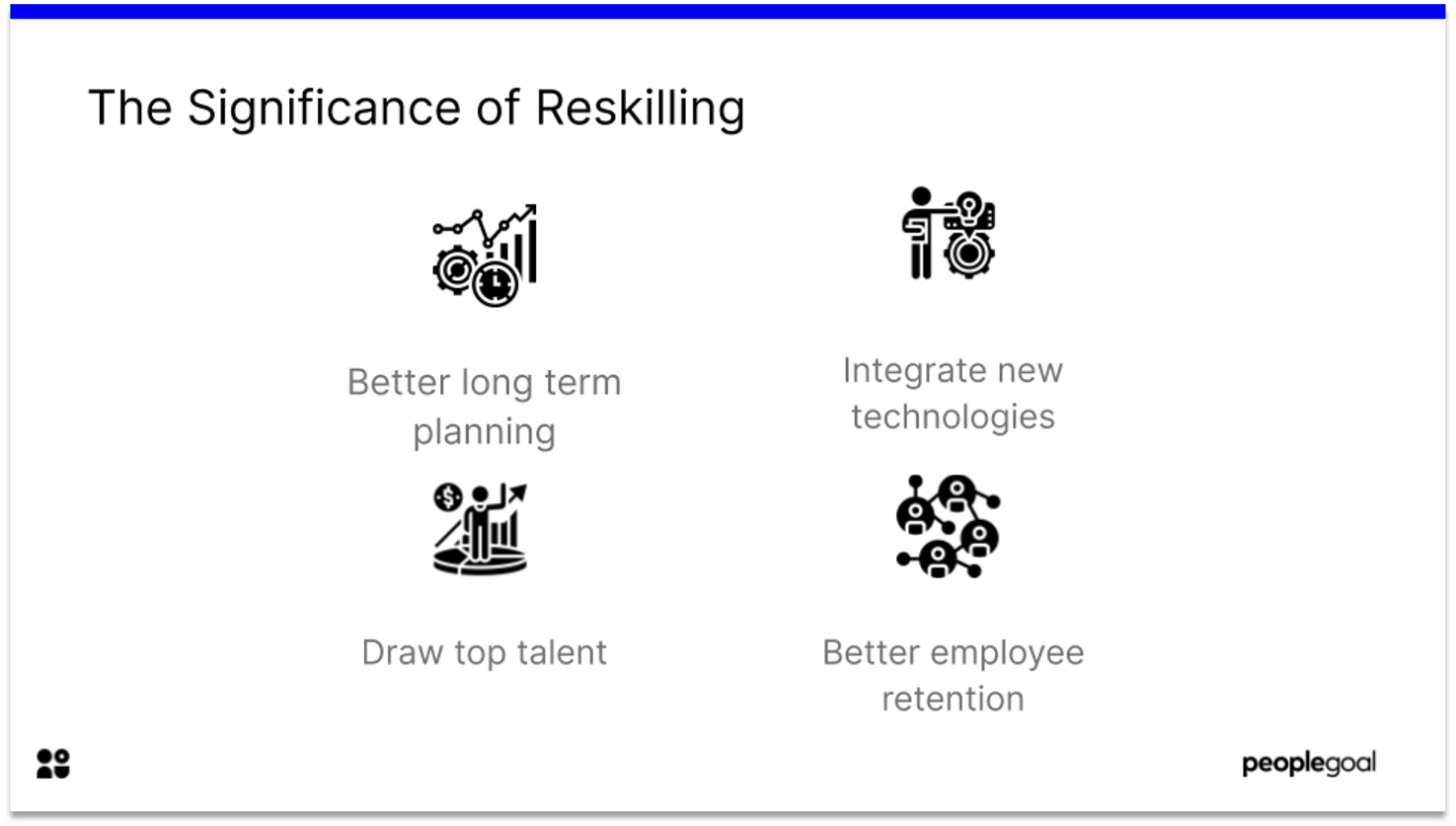
1. Draw Top Talent
Now more than ever, the quality of talent that you will attract to your organization is determined by the learning and development opportunities that you offer. In particular, Gen Z workers coming into the professional world put a lot of emphasis on L&D as part of their work responsibilities.
If you build a reputation as a company that facilitates and encourages training programs, this will lead to a much better yield for top talent. Employees want to build skills that they can incorporate at every level of their practices in work. Therefore, demonstrating that your organization offers reskilling opportunities as a part of an employee’s role will have considerable advantages.
2. Better Employee Retention
With your employees, new or old, the prospect of reskilling should be prevalent in your conversations. It should be considered as more than simply an end to meet in the future. Training programs can be integrated as part of your employees’ responsibilities in their day-to-day tasks.
By putting more time and focus on the development of each of your employees, you can expect to see better employee engagement and consequently employee retention. Putting some time aside to identify the skills that your employees would like to develop and then aligning these with your long term objectives is mutually beneficial for all involved.
Additionally, whilst this will boost morale and motivation, this provides a far more cost-effective solution compared to bringing in specialist talent.
3. Integrate New Technologies
Amongst many other things, for several companies, 2020 brought to the forefront the need to ensure that all employees have adequate digital skills. A compulsory move to remote work tested the digital literacy of many employees. This moment very clearly demonstrated that we must all better prepare for further digital advancements. Catering for this with digital upskilling programs enables better integration of new technologies for all members of your organization.
Technology is integral to the majority of our work activities and interactions with each other. In fact, McKinsey project that 75% of people using digital channels for the first time indicate that they will continue to use them when things return to “normal.” As a result, there is a need for considerably more training and preparation as these tools continue to become ever more advanced.
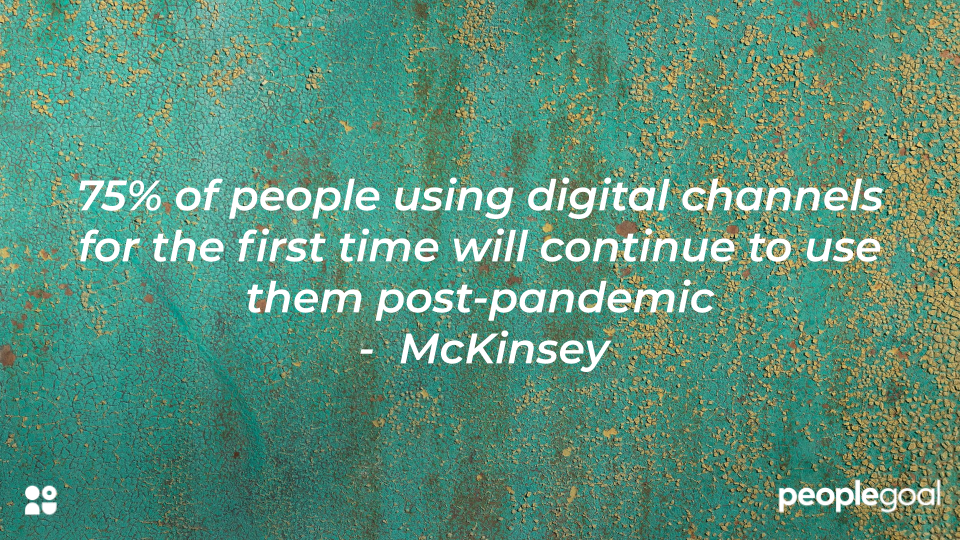
Reskilling: A Winning Strategy for 2021
How you go about instigating and realizing the reskilling and training of your workforce can make all the difference in how successful your efforts turn out. At the forefront of the push for a greater focus on reskilling in the workplace in the corporate world is PwC. They have made an investment pledge of $3 billion to help their workforce build new skills.
Advocating for:
"A blend of thoughtful leadership, business and financial strategy, relevant tools and compelling incentives that tap into what people want and how they prefer to work" – PwC
It is clear that PwC strongly support the notion of ensuring that their entire global network of employees have proficient skills to excel in their roles.
Unlock the power of your people and create a strategy that is sustainable and forward-thinking. As long as you have a clear and desirable target to strive for, this will make for much more traceable and attainable long term goals.
Be sure to demonstrate to your employees the personal value and gains that can be made from training programs. Upskilling and reskilling the workforce leads to a better informed and more productive organization. Every time you are able to successfully reskill an employee, this will contribute to their own professional development whilst also contributing to the depth in human capital for your organization.
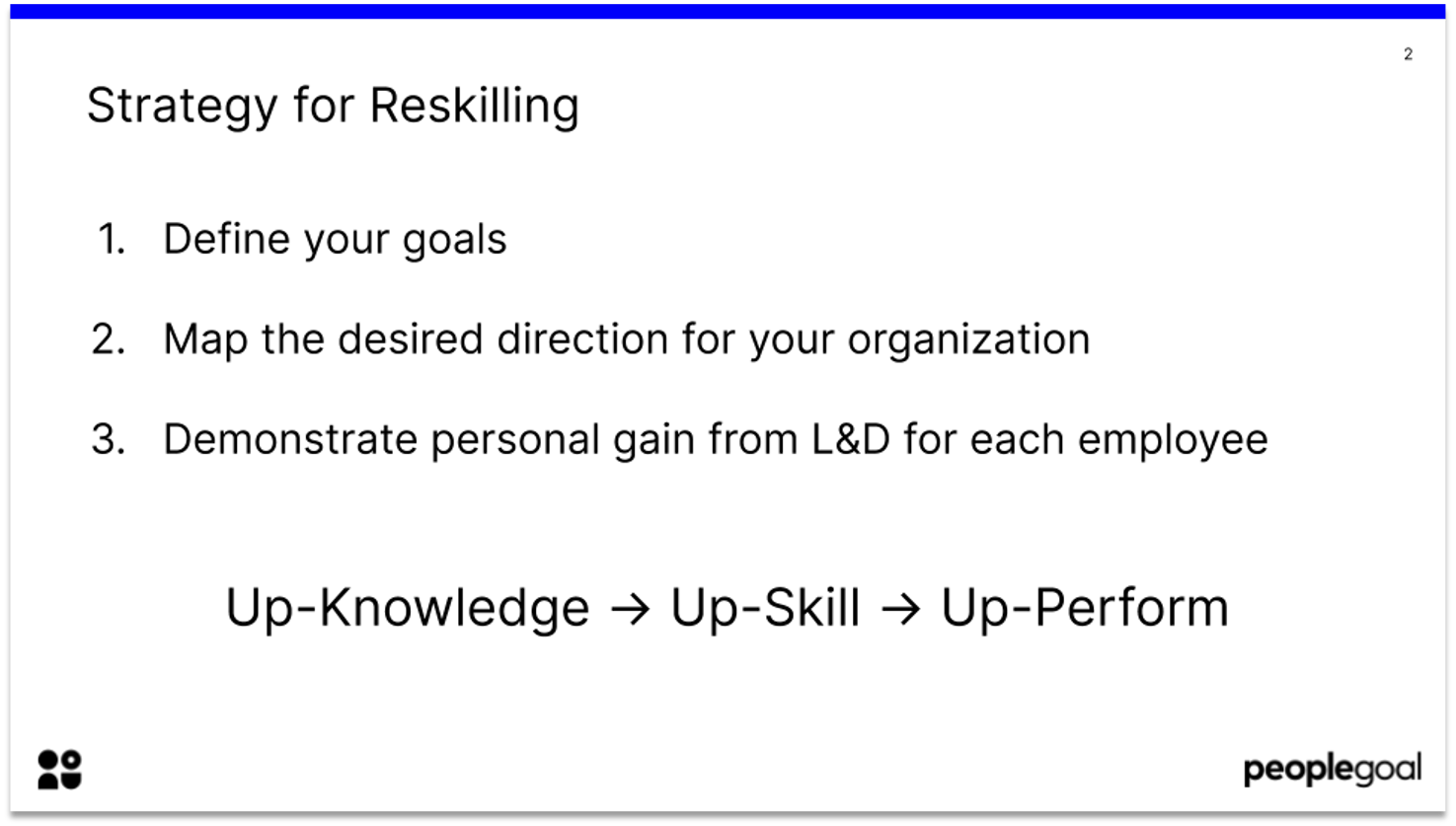
Key takeaways
HR leaders need to focus on future-forward work design that eliminates the work friction that frustrates employees today. By allowing employees to be responsive and anticipate changes they are able to adapt their approach and activities accordingly.
The future of the workplace can be planned for but as 2020 showed us, it is still often unpredictable. Consequently, the best approach is to expect the unexpected. Train and reskill employees before they find themselves drastically out of place and bewildered by unforeseen changes. If you are continually improving and educating your workforce, the skills they develop will make them more resilient and adaptive in times of adversity.
Ready to 3x Your Teams' Performance?
Use the best performance management software to align goals, track progress, and boost employee engagement.




